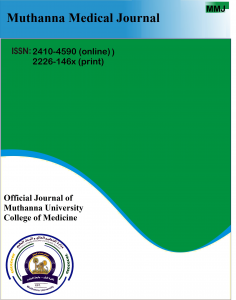 Muthanna Medical Journal
Muthanna Medical JournalResearch Article 
Ince Mohammed Norrie*1, Ali Adnan Jabbar Alwahami
Abstract
Dyslipidemia is a well-documented and a common finding in patients with CRF and its
prevalence is higher than in general population. Lipid profile has been studied in 50 patients
with CRF excluding patients on hemodialysis or renal transplantation, and in 48 normal
subjects of matched age and sex as a control. Also, the proteinuria in GUE was assessed and a
history of hypertension was evaluated in patients’ group. Dyslipidemia was found in 80% of
patients with CRF who have significantly higher s. triglyceride and VLDL-C and lower HDL
C levels than control (P value <0.0005 for triglyceride and HDL-C and < 0.005 for VLDL-C).
The commonest abnormality was hypertiglyceridemia (56%). The frequencies of other lipid
abnormalities were as follows: low HDL-C level (52%), high LDL-C level (32%), and
hypercholesterolemia (22%). Among patients with abnormal lipid profile, 70% of them have
hypertension, and the same percentage have proteinuria. The dyslipidemia distributed evenly
along the course of renal failure, so it can occur in the early course of CRF as well as in the
late one. In conclusion, dyslipidemia is present in a significant number of patients with CRF
regardless of the duration of renal failure, also, it is significantly associated with hypertension
and/or proteinuria.
Key words: Dyslipidemia; Hypercholesterolemia; Chronic renal failure